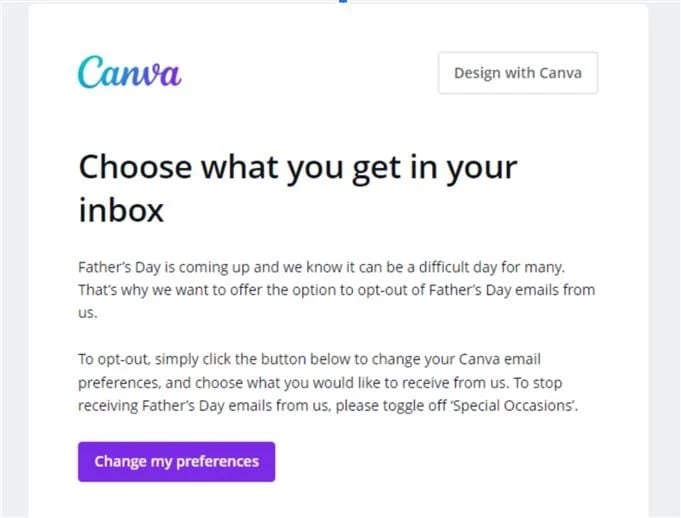Transparent Personalization: 5 Ways to Win Over Customers
 Zoox Smart Data - 1 de July de 2022.
Zoox Smart Data - 1 de July de 2022.
In today’s digital-first world, skimping on personalization is not an option. As of 2021, 71% of customers expect companies to deliver personalized interactions, and 76% say they get frustrated if it doesn’t happen. (McKinsey)
And brands would be silly not to capitalize on the trend, as personalization comes with a lot of bottom-line benefits, with consumers more likely to:
- Make a purchase
- Make a repurchase
- Recommend to family and friends
However, when done wrong, personalization can make people fear for their privacy. And customers that experience bad personalization are willing to do something about it, whether it be unsubscribing from communications, sharing their experiences online or finding a competitor to jump to.
Flavors of Bad Personalization
Bad personalization can come in a lot of flavors, but it often includes:
- Experiences that are intrusive or too personal
- Experiences that are presumptive about a person’s wants and likes
- Companies that require an app installation to get a good in-store experience
- Companies that ask for unnecessary information, such as access to location, contacts, email, etc.
“Brands must tread with caution or run the risk of ruining a once-solid customer relationship,” Hunter Montgomery, chief marketing officer at ChurnZero said: “Once this line is crossed and a customer requests to no longer be contacted, it will take a lot of effort to bring them back into the fold.”
He added, “As people’s lives become increasingly reliant on digital experiences, it makes perfect sense that consumers are demanding better data privacy and security methods.”
Fortunately, there’s an answer to the personalization vs. privacy conundrum: transparency. Marketers can use transparency to assuage customer concerns without giving up on personalization efforts.
Keep Customers Informed
“In order for organizations to retain the trust of their customers, they need to be very transparent on what data they are collecting and how they are using it,” said Sandy James, director of business development at Zoox Smart Data. This is especially true if you use second- or third-party data that’s collected behind the scenes.
Beyond telling customers what data you collect, outline the how and why of it. From where do you source your data? What do you do with it once you have it? Make sure to place emphasis on providing the best customer experiences possible.
To keep customers informed, add easy-to-find (and easy-to-understand) notices on websites, apps and social media pages. And send out emails — or other preferred forms of communication — when data procedures are updated.
“Organizations also need to be ready to answer data privacy and security questions at all levels of the organization,” added James. “This transparency will build trust and provide a level of expectation to the consumer.”
Focus on Zero-Party Data
Zero-party data is information a customer shares intentionally with a brand. This includes preferences, purchase intent, personal information and more.
Because the customer chooses to hand this information over, it’s more likely to be relevant and accurate. Brands can also be certain that zero-party data is information the customer actively wants them to know.
If you’re wondering if customers will even share their personal data, the answer is a resounding “yes.”
Consider these important statistics from a 2022 Cheetah Digital report:
- 92% of consumers will trade personal and preference data for loyalty points
- 55% of consumers will trade personal and preference data to feel part of a brand's community
- 86% will trade personal and preference data for early or exclusive access
However, it’s important to know where to draw the line. While consumers are willing to trade some information for a stellar experience, 59% said they still aren’t comfortable sharing location data — even for better service.
Allow Access to Preferences
When it comes to personal data, customers want to know they’re in control.
“Consumers want to decide when and how brands engage with them, even with brands they have existing relationships with,” said Montgomery. “If brands subject their prospects and customers to outside inquiries, or don’t give them contacting preferences, brands increase the risk of having prospects walking away and customers churning.”
Brands should hand the reins to customers by allowing them to access and alter their personal preferences, including:
- The best communication methods
- The best times to communicate
- The desired frequency of communication
- Preferred names and titles
- Desired access to demographics, such as age, income, education, etc.
One way to do this? With a simple email.
For example, I personally don’t like getting emails —- even from brands whose services or products I actively use. I’d rather initiate the conversation myself. However, one recent email from design software Canva recently caught my eye.
The subject line said: “Would you rather opt out of Father’s Day emails?”
My answer? Yes. Absolutely. And when I clicked on the email, it was immediately clear that I could access and customize my preferences.
While I usually delete branded emails right away — and many consumers do the same — this was one I welcomed. The email says:
"Father's Day is coming up, and we know it can be a difficult day for many. That's why we want to offer the option to opt-out of Father's Day emails from us. To opt-out, simply click the button below to change your Canva email preferences, and choose what you would like to receive from us. To stop receiving Father's Day emails from us, please toggle off 'Special Occasions'."
Make Personalization Relevant
Don’t personalize just to personalize — make it relevant and useful.
“If what I know about the person does not meaningfully change the way I'd interact with them in a material way, then I prefer to not use it,” said Daniel Englebretson, director of growth marketing and demand generation at Phononic Inc. “Not only is it awkward, but there is risk that you'll turn the prospect off.”
With the amount of data that marketers have to sift through, it can be tough to determine what’s useful and what’s not. However, the key focus should be on providing value to the customer.
“The best way for marketers to ensure transparent personalization is to use the data in ways that are jointly beneficial to the customer and the brand — a win, win situation,” said Montgomery.
Work With Compliant Partners
You need to look beyond the walls of your organization when it comes to respecting consumer privacy. Investigate every software, vendor and third-party solution you use.
“Data privacy is a very complex situation which is constantly evolving,” said James. “Marketers need to partner with organizations that are familiar with current global data privacy policies and can help them navigate new laws and regulations.”
Prioritize partners that maintain compliance with accepted data privacy standards, such as:
- GDPR (The General Data Protection Regulation)
- CCPA (The California Consumer Protection Act)
- CPRA (The California Privacy Rights Act)
- CPA (The Colorado Privacy Act)
- PIPEDA (The Personal Information Protection and Electronic Documents Act)
“By working with technology providers that are familiar with current data privacy laws and regulations, these organizations can better serve the consumer while also protecting their personal data,” added James.
Establish a Central Data Hub
When it comes to managing data in-house, Montgomery recommends a central data hub that collects from all customer engagement touchpoints.
“Siloed data is a recipe for disaster —- and creates a disjointed relationship,” said Montgomery. “It’s important that marketers take the time and put in the effort to gather this data together to foster stronger customer relationships.”
This strategy, he explained, enables brands to make customer-facing teams better at their jobs.
Check-In With Customers
Establishing transparent personalization isn’t a set-it and forget-it plan. Instead, it’s important to touch base with your customers and see how they’re responding to your efforts.
“Keeping regular temperature checks on your customers’ interactions can help ensure you are interacting at the right level,” explained Montgomery.
Remember the email from above, offering to let me update my preferences? This method would also work to ensure customers are satisfied with your current personalization tactics. Another option is post-purchase surveys or star ratings.
Successful Personalization Needs Transparency
Marketers should look at transparent personalization with excitement. Why? Because it allows them to deliver unique, all-encompassing experiences at the individual level — experiences that ultimately lead to happier, more satisfied customers.
By following the transparent personalization tips above, marketers can offer up specific, relevant and useful experiences.
This article was originally published by Michelle Hawley, at CMSWire.




Comments